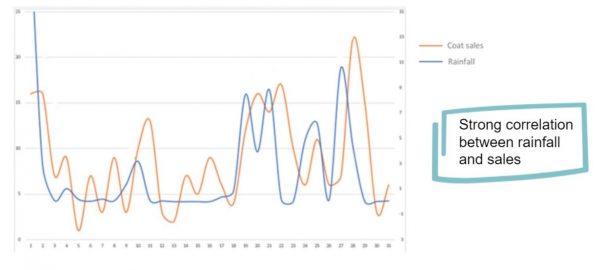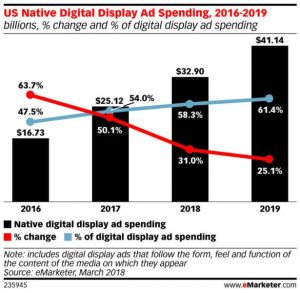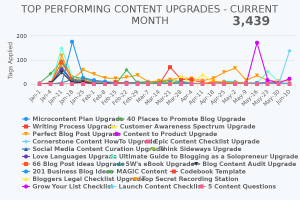In this article, we talk about the challenges of scaling up your search marketing campaigns and how marketers can achieve this more easily using robotic process automation.
According to Dentsu’s Ad Spend Report 2021, the UK is expected to show the second-highest growth rate of ad spend around the world this year. While many brands paused their advertising budget in reaction to Covid-19 and the first lockdown, rapid recovery is now the priority and scaling up search marketing campaigns will play a pivotal role in success.
Unfortunately, scaling up is always more difficult than ramping down, and the usual challenges are exaggerated by the rush of competitors all trying to spark growth at the same time
The challenges of scaling up search marketing campaigns
Scaling up search marketing campaigns multiples your workload and there’s always a limit to how much you can do with your existing resources, available time and budget. Before we even talk about the impact of Covid-19, it’s important to understand the challenges of scaling up campaigns and the limitations you face:
- Limited resources: You only have so much personnel and time to dedicate to search marketing.
- Finite budget: Sooner or later, performance is limited by the size of your budget.
- Competition: As your competitors also scale, keywords become more expensive and ad placements/rankings more difficult to win.
- Relevance: Maintaining or increasing relevance at scale involves a lot of work.
- Variance: Seasonal variation and evolving trends lead to inconsistent results, unless you’re able to react at scale.
- Data overload: Scaling up SEM campaigns requires a lot of data but many companies/marketers find themselves overwhelmed with more data than they can make use of.
For search marketers, Covid-19 hasn’t created any new challenges for scaling up campaigns but it’s made them more difficult to overcome. This is most evident in the impact on consumer behaviour, which has changed so radically over the past 18 months that years’ worth of historical data and forecasts fail to predict trends with any accuracy.
Now, you have to use real-time search data to map out consumer trends, as they happen, and this exacerbates the existing issue of data overload that so many marketers already suffer from.
Of course, consumer trends are always changing but they’re changing more rapidly and more drastically than we’ve ever seen. Overnight, holiday bookings can skyrocket only for a wave of cancellations to follow, off the back of comments from one MP. Extreme variance makes it more difficult to manage campaign performance, sustain consistent results and use historical performance data to inform decisions.
With companies ramping up their search marketing efforts once again, these challenges are exaggerated even further as everyone tries to scale campaigns at the same time, driving up the competition, CPCs and workload required to win ad placement and rankings.
Limited resources and finite budgets are being stretched to the extreme and search marketers need to open up some room to manoeuvre. The answer lies in technology and one data-driven solution, in particular: robotic process automation.
What is robotic process automation?
We’ve answered this question before, expanding upon definitions provided by some of the biggest names in robotic process automation (RPA) products and services.
UiPath describes probiotic process automation as “a software technology that makes it easy to build, deploy, and manage software robots that emulate human actions interacting with digital systems and software.”
While, according to Deloitte, RPA “uses software, commonly known as a ‘robot’, to capture and interpret existing IT applications to enable transaction processing, data manipulation and communication across multiple IT systems.”
Broadly speaking, robotic process automation replicates certain digital tasks humans perform using software. More specifically, RPA completes these tasks by pulling in data from one or multiple platforms and outputting this data through preprogrammed actions. This could be in the form of reports, notifications or integrated actions with other software platforms.
For example, you may build a chatbot that performs tasks based on the input messages from users.
How do marketers use robotic process automation?
Basic applications of robotic process automation perform linear tasks, such as regular link audits checking for low-quality links that need addressing. In this case, the automated output could be a notification alerting you or your SEO team about a new link that needs dealing with.
More complex applications of robotic process automation implement AI and machine learning to build applications capable of making decisions or performing a range of actions based on the data fed into them. For example, our intelligent automation platform Apollo Insights collects data from hundreds of third-party sources and our clients’ websites to identify new search opportunities, technical SEO issues, emerging competitors and forecast performance.
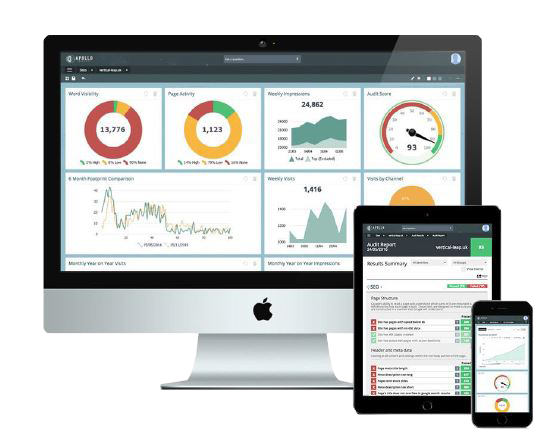
This one platform saves our search marketing teams hundreds of hours per week by handling basic data management, analysis and reporting for us. As an automated system, Apollo is capable of doing more analysis than a human team ever could in a single week, for every client, so it’s not only saving time and boosting productivity, but also empowering us to do far more with the resources we have available to us.
This is just one of the ways we use robotic process automation here at Vertical Leap (and we’ll look at others throughout this article) but it plays a key role in every aspect of scaling up search marketing campaigns.
Scaling up search marketing campaigns with RPA
We’ve already explored a few ways robotic process automation helps marketers achieve more but let’s dive a little deeper and see how it solves the challenges of scaling up search marketing campaigns.
Working with data at scale
The first challenge robotic process automation helps you overcome is managing large quantities of data. Earlier, we looked at a definition of RPA from Deloitte and, in a piece published with The Wall Street Journal, senior managers David Geisinger and David Chan explain that “manual processes, siloed organisational structures, and legacy technologies simply can’t keep pace with the data quantities, speed, and scale that define business today”.
Big data is now accessible to businesses of all sizes but managing vast amounts of data is a challenge for any business.
Before you can gain insights, you have to capture, clean and visualise the necessary data. You can’t do this at scale manually but you can automate each of these steps with robotic process automation, which is precisely what we do with Apollo Insights. Instead of manually pulling in data from third-party sources, the platform collects everything we need, compiles data into relevant reports, predicts trends and even makes recommendations.
With search marketing data stacking up every day, RPA allows us to make full use of the information at our disposal – for example, how purchase habits change throughout the day and which external factors (seasonality, weather, sporting events, etc.) they correlate with.
Robotic process automation allows the smallest of businesses to use big data like enterprise brands.
Finding new search opportunities
One of the most exciting uses of intelligent automation is programmatically discovering new search opportunities. With machine learning, you can automate the basics like keyword and content gap discovery or highlighting weaknesses in your competitors’ search marketing strategies that you can exploit.
By reducing the amount of time spent on manual keyword research, marketers can focus more of their efforts on crafting campaigns to seize these opportunities. You’ll also find algorithms often spot opportunities
Taking things further, you can use predictive analytics to forecast search trends and consumer habits that inform marketing actions. For example, you might see rising interest in a certain range of products and invest more in creating content relevant to that product range so you can take full advantage while demand is at its peak.
This is where you start using RPA to take action on emerging trends before they peak rather than simply reacting to them once everyone else has caught on.
Delivery at scale
Earlier, we talked about finite budgets, maximising relevance and dealing with variance as some of the biggest challenges of scaling up search marketing campaigns. All of these factors make it increasingly difficult to get your content and ads seen by the right audience, in the right place, at the right time.
Data provides a solution to these challenges but, once again, you have to be able to utilise all of the data at your disposal.
In paid advertising, the potential scale of your campaigns is always limited by the budget you have available. Whatever you’re spending on paid ads, the only way to maximise scale is to get the best return on your ad spend by making every impression and click count. A key strategy for achieving this is delivering ads during the times when users are most likely to take action and
As explained in our recent article on supercharging eCommerce PPC campaigns, we can use automated analytics to spot trends in product sales and detect rising demand for specific items. Not only that, but we can pull in data from third-party sources to understand why demand is rising or why certain products sell particularly well on some days and weeks but not others.
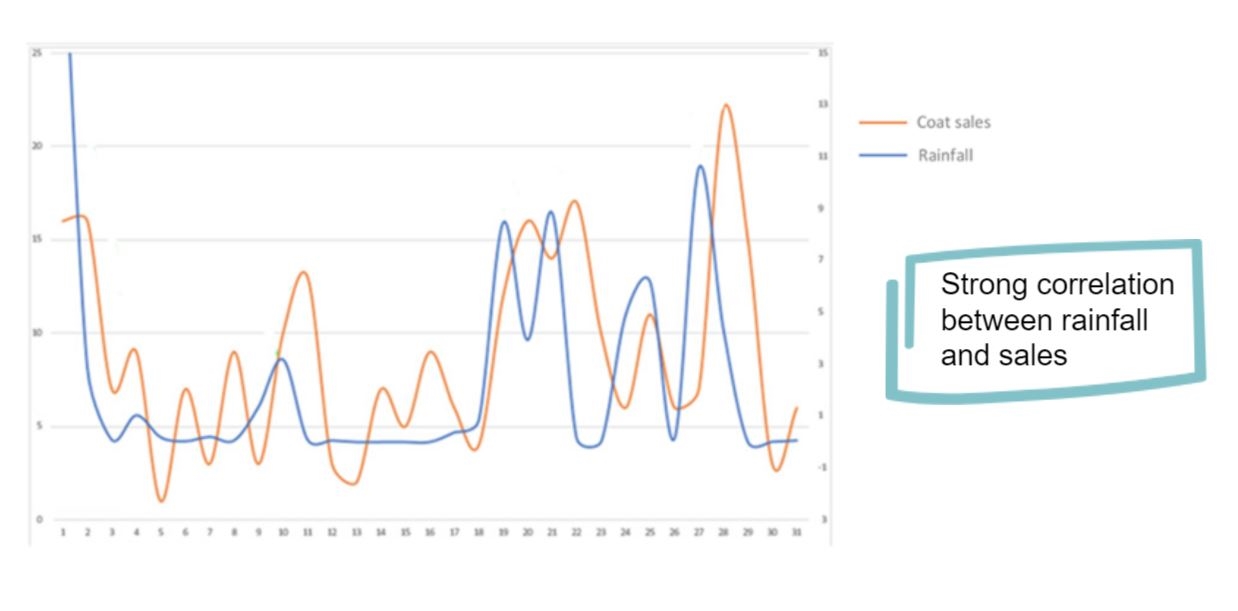
For example, we may find that sales for certain products are largely dependent on the weather or weather forecasts ahead of weekends and public holidays. Now, we know the cause of sales fluctuations, we can use predictive analytics to forecast sales figures by pulling in data from the Met Office (and any other relevant sources) to determine which days we should increase budgets for ads promoting these products to maximise sales and when to reduce them, which protects our clients’ budgets.
Robotic process automation has one last trick to help us out here, too. We can create a script to automate bid adjustments, based on our predictive forecasts, so that our clients’ bids are always optimised to maximise sales before events impact purchase decisions – all without any human input.
Once again, RPA allows us to act ahead of events at a scale and depth that simply wouldn’t be possible without automation.
Optimisation at scale
As your search marketing campaigns grow, the optimisation workload multiplies and the gains/losses drastically increase. The returns on a breakthrough in landing page CTA design can be immense but the potential damage caused by technical issues, such as low-quality links pointing to your site, also grows.
Technical SEO may be where automation has made its biggest impact for search marketers. Not only is this one of the most labour-intensive aspects of search optimisation, but it’s also one of the most suitable for automation, due to its binary, repetitive nature.
With RPA, we can run audits at regular intervals, compile performance reports and notify technicians when action needs to be taken. So, instead of manually looking for problems like broken links, you can spend more time addressing issues that require manual input, such as deciding the best strategy for optimising page speed.
A good example of how this helps us scale search marketing campaigns is using robotic process automation to manage citations. As Head of Services at Vertical Leap, Lee Wilson, explains in this article on Econsultancy, “with a company that’s got hundreds of locations, even if you only build one citation per location (which wouldn’t really work), you’d be building loads of citations on a monthly basis”.
Clearly, this isn’t manageable for a human team and, even if it was, it wouldn’t be an effective use of their time – the SEO benefits don’t justify the colossal input required. However, once you automate this task, the returns significantly outweigh the input and human personnel is free to work on activities that can’t be automated.
Knowing what to automate
We’ve spent most of this article exploring the search marketing tasks you can automate with RPA but it’s equally important to understand which tasks are not suitable for automation.
To help you decide which tasks robotic process automation is capable of handling, here are the key characteristics to look out for:
- High in volume: This is the first sign that you should look into the possibility of RPA, which can handle much higher volumes than humans.
- Time-consuming: Tasks that take up a lot of time should always be assessed to see if part or all of the process can be automated.
- Repetitive: Tasks that are performed in exactly the same way every time are more suitable for automation.
- Error-prone: Often, it’s the simplest but most repetitive tasks that result in the highest rates of mistakes and errors from humans.
- Rule-based: Simple tasks that can be defined by programmable rules.
- Low-variance: Tasks with few/low variation scenarios that can be handled within the confines of algorithm rules.
- Readable inputs: Processes that rely entirely on data inputs can be either fully or partially automated.
As a general rule, RPA is there to automate repetitive software tasks that put a drain on resources – eg: data collection, reporting, visualisation, etc. However, advances in AI and machine learning means the technology is capable of making more decisions – for example, predicting which landing page template will convert more users (based on historical performance).
Even still, the most advanced RPA systems should only ever inform key decisions, not make them on behalf of search marketers. An algorithm might be able to predict the performance of different landing page designs but they are predictions and nothing else – the tests need to prove whether the hypothesis is correct or not.
There are also tasks that RPA is capable of automating that are still worth doing manually.
Earlier, we talked about automated link audits and this is a perfect example of when to use robotic process automation. You can even automate notifications to alert technicians when low-quality links are detected so they can decide whether to disavow them. Technically, you could automate link disavowals to remove them as soon as they’re detected but Google explicitly states that you should only disavow backlinks if:
- You have a considerable number of spammy, artificial, or low-quality links pointing to your site,
AND
- The links have caused a manual action, or likely will cause a manual action, on your site.
Again, it comes down to using RPA to automate actions and inform decisions but never make them for you.
Scale up your SEO campaigns, not your workload
The SEO workload increases every year and managing campaigns at scale is no longer possible without the right technology. For enterprise brands, the advantage used to be having more people on board to make things happen but now it’s got more to do with investment in technology and infrastructure to maximise the efficiency of resources.
Robotic process automation is powering new levels of business productivity – not only in search marketing – and it doesn’t discriminate against businesses size. Now, small companies can manage big data like enterprise brands, whether they use automation tools, build their own systems or outsource to an agency with the technology ready and waiting.
With companies all scaling up for post-Covid recovery at the same time, automation will make the difference between seizing opportunities and playing catch-up.
Digital & Social Articles on Business 2 Community
(78)
Report Post